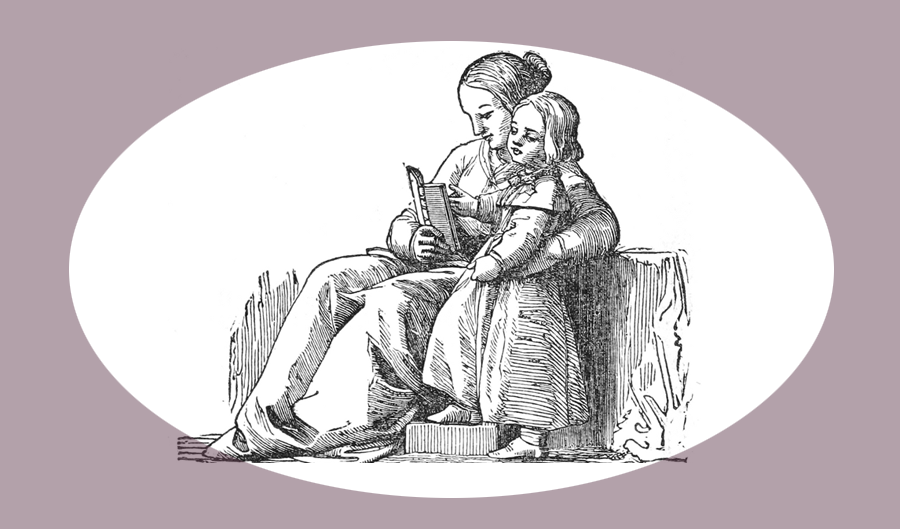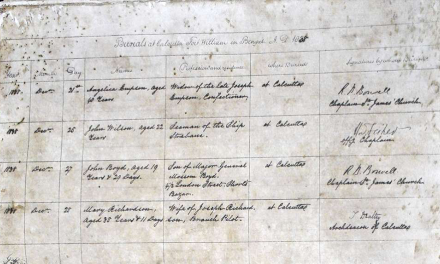Imagine flipping through the pages of a beautifully crafted book, full of stories, photographs, and memories that have been passed down through generations of your family. This isn’t just any book; it’s a precious heirloom chronicling the lives and experiences of your ancestors and relatives—a family history book. Creating a family history book is a wonderful way to preserve your family’s legacy, bring family members together, and learn more about the people who came before you.
In this step-by-step guide, we’ll show you how to create your very own family history book, from conducting research and gathering materials to designing and sharing the finished product. Get ready to embark on a meaningful journey through time and celebrate the unique heritage that has shaped your family’s story.
Planning Your Family History Book
Before diving headfirst into creating your family history book, it’s essential to spend some time planning the project. This initial stage will help you define your goals and objectives, ensuring that your book is a meaningful and engaging reflection of your family’s history.
First, consider the scope of your project. What do you want to include in your family history book? You might choose to focus on certain events or time periods, or perhaps you’d like to tell the stories of specific family members. Make a list of the elements you’d like to include, such as photographs, documents, and personal anecdotes, to help guide your research and writing.
Next, decide on the format of your book. Will you create a physical book, a digital book, or both? Each format has its own set of advantages and disadvantages. Physical books offer a tangible, traditional feel and can be passed down through generations. However, they can also be more expensive to produce and challenging to update. Digital books, on the other hand, are easy to share, update, and store, but they may lack the sentimental value of a physical book. Weigh your options carefully, and choose the format that best suits your needs and preferences.
Now that you’ve determined the scope and format of your family history book, it’s time to move on to the next phase: researching your family’s past. In the following section, we’ll explore the various resources and strategies you can use to uncover the fascinating stories and details that make up your family’s unique history.
Researching Your Family History
One of the most exciting aspects of creating a family history book is the research process. You’ll have the opportunity to delve into your family’s past and uncover interesting stories, memories, and connections that you may not have known about. Here are some tips to help you get started with your research.
Begin by gathering any existing family records and materials you have access to. Look for old family photographs, documents, letters, and artifacts that can provide insight into your family’s history. Don’t forget to speak with older family members, as they can be invaluable sources of information and personal stories. Be sure to ask open-ended questions and record their memories, either in writing or using an audio recorder.
To supplement your family’s records, take advantage of genealogy resources available both online and offline. Websites like Ancestry.com and FamilySearch.org offer extensive databases and tools that can help you trace your family tree and discover new connections. Local libraries, archives, and genealogy societies can also provide access to valuable resources, such as historical records, newspapers, and maps.
As you gather information, it’s important to keep your research organized. Create a timeline of your family’s history and develop a family tree to visualize your ancestral connections. Use folders or digital tools to sort and categorize documents, photographs, and notes. This organization will make it easier to write your family’s stories and design your book later on.
With a solid foundation of research in place, you’re ready to bring your family’s history to life through engaging narratives and captivating stories. In the next section, we’ll discuss how to write and structure your family’s stories in a way that will captivate your readers and do justice to your ancestors’ experiences.
Writing Your Family’s Stories
Now that you’ve conducted thorough research and gathered a wealth of information about your family’s history, it’s time to craft the narratives that will make up the heart of your family history book. Here are some tips to help you write engaging and memorable stories that will resonate with your readers.
First, identify the key events and moments in your family’s history. These might include births, marriages, deaths, migrations, and other significant experiences that have shaped your family’s story. Use these milestones as the backbone of your narratives, providing context and structure for your stories.
As you write, keep in mind that storytelling techniques can make your narratives more compelling and enjoyable to read. For example, use vivid descriptions and sensory details to paint a picture of the settings and characters in your stories. Incorporate dialogue to bring your ancestors’ voices to life and create a sense of immediacy. And don’t shy away from exploring emotions, both the joys and the hardships your family members may have experienced.
In addition to recounting historical events, be sure to include interesting anecdotes and personal memories that make your family’s history unique. These can range from humorous tales to poignant moments that reveal your ancestors’ personalities and values. By weaving these anecdotes into your stories, you’ll create a richer, more nuanced portrayal of your family’s past.
As you write, be mindful of privacy and sensitivity concerns. While it’s important to be honest and accurate in your storytelling, consider how your words may impact living family members or touch on sensitive topics. When in doubt, err on the side of discretion and consult with your family members to ensure everyone is comfortable with the content.
With your family’s stories written, it’s time to turn your attention to the visual aspects of your family history book. In the next section, we’ll explore how to design and format your book to create a beautiful and cohesive presentation of your family’s history.
Designing and Formatting Your Book
The design and formatting of your family history book play a significant role in making it visually appealing and easy to navigate. By carefully considering your book’s layout, visual style, and use of photographs and images, you can create a polished and professional final product that showcases your family’s stories in the best light.
Start by selecting a layout that works well for your content. You might choose a chronological approach, organizing your book by time periods or generations. Alternatively, you might opt for a thematic layout, grouping stories and information by themes, such as occupations, hobbies, or family traditions. Another option is to focus on individual family branches, dedicating a section to each branch and exploring their unique stories and experiences.
Once you’ve decided on a layout, think about the visual style of your book. Typography, colors, and design elements all contribute to the overall aesthetic and mood of your family history book. Choose fonts and colors that are easy to read and complement the tone of your stories. Don’t be afraid to experiment with different design elements, such as borders, background patterns, or illustrations, to create a unique and personalized look for your book.
Photographs and images are often the highlights of a family history book, providing a tangible connection to your ancestors and their lives. Be sure to include a variety of photographs, from formal portraits to candid snapshots, to give a well-rounded representation of your family members. Digitize old photos and documents to ensure they are preserved and can be easily incorporated into your book. When including images, make sure to provide proper labeling and context, such as names, dates, and locations, to help your readers understand the significance of each photo.
By carefully considering the design and formatting of your family history book, you’ll create a visually appealing and engaging final product that showcases your family’s stories in the best possible way. In the next section, we’ll discuss the editing and review process, ensuring your book is polished and ready for printing and sharing.
Editing and Review
Once you’ve completed the writing and design of your family history book, it’s important to take the time to carefully edit and review your work. This process will ensure that your book is accurate, clear, and consistent, making it an enjoyable and informative read for your family members.
Begin by reviewing the content of your book, checking for accuracy in names, dates, and other details. Make sure your stories are clear and well-organized, and that the overall structure of your book is cohesive and easy to follow. As you edit, keep an eye out for any inconsistencies in tone or style and make adjustments as needed to create a unified voice throughout your book.
Once you’re satisfied with the content, invite your family members to review your work and provide feedback. They may have additional insights, stories, or corrections that can help enhance your family history book. By involving your family in the editing process, you’ll create a stronger sense of ownership and pride in the final product.
Finally, take the time to proofread your book, paying close attention to grammar, punctuation, and spelling errors. You might consider enlisting the help of a professional proofreader or using online proofreading tools to ensure your book is free of errors and polished to perfection.
With your book thoroughly edited and reviewed, you’re now ready to move on to the final stage of the process: printing and sharing your family history book. In the next section, we’ll discuss different printing methods and options for sharing your book with your family and the wider world.
Printing and Sharing Your Book
At last, your family history book is complete, and it’s time to share it with your loved ones. This final stage involves choosing a printing method, creating a digital version (if applicable), and distributing your book to family members and beyond.
First, decide on a printing method that suits your needs and budget. There are several options to consider, such as self-publishing, print-on-demand, or working with a professional printing service. Self-publishing gives you the most control over the final product but may require more hands-on work in formatting and preparing your book for printing. Print-on-demand services, such as Blurb or Lulu, offer an affordable and flexible way to produce your book, allowing you to order copies as needed without a large upfront investment. Professional printing services often deliver the highest quality product but may come with a higher price tag and minimum order requirements.
If you’ve opted to create a digital version of your family history book, now is the time to convert your book into an eBook or PDF format. There are many software options and online tools available to help you with this process, such as Adobe InDesign, Apple Pages, or Canva. A digital version can be easily shared, stored, and updated, making it a valuable complement to a printed book.
With your book printed and/or converted into a digital format, you’re ready to share it with your family and friends. Distribute physical copies to your relatives, or send digital versions via email or file-sharing services. If you’re comfortable with a wider audience, consider sharing your book online through social media or a family website, allowing extended family and friends to explore your family’s history.
By completing your family history book and sharing it with your loved ones, you’ve not only preserved cherished memories and stories but also created a lasting legacy that can be passed down through generations. As you reflect on the journey you’ve undertaken to create this treasured heirloom, take pride in knowing that you’ve contributed to the ongoing story of your family’s unique history.
Conclusion
As we reach the end of this guide, we hope that you feel inspired and well-equipped to embark on the rewarding journey of creating your own family history book. By carefully planning your project, conducting thorough research, crafting engaging stories, and thoughtfully designing and sharing your book, you’ll create a priceless heirloom that celebrates your family’s unique heritage and strengthens the bonds between generations.
The process of creating a family history book can be an incredibly meaningful and fulfilling experience, as you’ll have the opportunity to learn about your ancestors, share their stories, and preserve their memories for future generations. Moreover, you’ll foster a deeper connection with your family members and contribute to the tapestry of your family’s history.
So, gather your research materials, pick up your pen (or keyboard), and set out on this exciting adventure. The stories you’ll uncover and the legacy you’ll create will undoubtedly enrich your life and the lives of your loved ones for years to come.




